

![]()

*Combine the two num.
*Write over the common den.

*Divide out the common factor of (x -
5)
![]()

*Rewriting denominator in factored form
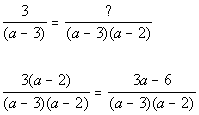
*Mult. top and bottom by (a - 2)
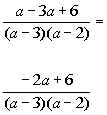
*Combine the two num.
*Write over the common den.
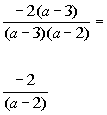
*Divide out the common factor of (a - 3)
![]()
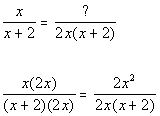
*Mult. top and bottom by 2x
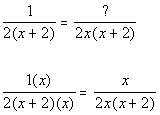
*Mult. top and bottom by x
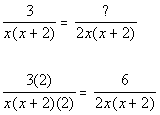
*Mult. top and bottom by 2
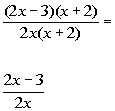
*Divide out the common factor of (x + 2)
Last revised on July 17, 2011 by Kim Seward.
All contents copyright (C) 2001 - 2011, WTAMU and Kim Seward.
All rights reserved.